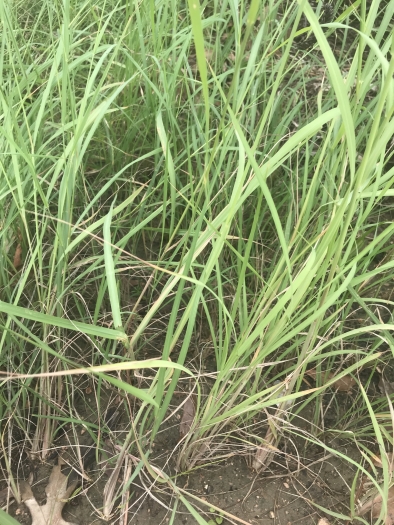Green Sprangletop
(Disakisperma dubium)
Green Sprangletop (Disakisperma dubium)
/
/

jim isleib
Public Domain
Image By:
jim isleib
Recorded By:
Copyright:
Public Domain
Copyright Notice:
Photo by: jim isleib | License Type: Public Domain | License URL: http://creativecommons.org/publicdomain/zero/1.0/ | Rights Holder: jim isleib | Publisher: iNaturalist | Date Created: 2020-09-23T15:01:55-07:00 |


















































Estimated Native Range
Summary
Disakisperma dubium, commonly known as green sprangletop or zacate gigante, is a perennial grass native to open woodlands, grasslands, and savannas, primarily in the southern United States, Mexico, and South America. It can grow up to 110 centimeters tall and is characterized by its branching panicle inflorescence with brown or greenish spikelets that appear during its flowering season. The grass is not particularly showy, but it serves an important ecological role in its native habitat, providing food and habitat for wildlife.
Green sprangletop is valued for its utility as a forage grass for livestock and wildlife, and it is often included in seed mixes for rangeland revegetation projects. It is also used for erosion control due to its extensive root system. This grass is adaptable to a range of light conditions, from full sun to part shade, and is tolerant of various soil types, including those with different drainage capabilities. While it is generally low-maintenance, it can become invasive outside of its native range, so care should be taken when planting it in non-native areas.CC BY-SA 4.0
Green sprangletop is valued for its utility as a forage grass for livestock and wildlife, and it is often included in seed mixes for rangeland revegetation projects. It is also used for erosion control due to its extensive root system. This grass is adaptable to a range of light conditions, from full sun to part shade, and is tolerant of various soil types, including those with different drainage capabilities. While it is generally low-maintenance, it can become invasive outside of its native range, so care should be taken when planting it in non-native areas.CC BY-SA 4.0
Plant Description
- Plant Type: Grass
- Height: 2-5 feet
- Width: 0.5-0.7 feet
- Growth Rate: Rapid
- Flower Color: N/A
- Flowering Season: Spring
- Leaf Retention: Deciduous
Growth Requirements
- Sun: Full Sun, Part Shade
- Water: Medium
- Drainage: Fast, Medium, Slow
Common Uses
Butterfly Garden, Low Maintenance
Natural Habitat
native to open woodlands, grasslands, and savannas, primarily in the southern United States, Mexico, and South America
Other Names
Common Names:
Scientific Names: , Leptochloa dubia, Disakisperma dubium, Diplachne dubia, Diplachne dubia var. pringleana, Leptochloa obtusiflora, Leptochloa pringlei, Chloris dubia, Ipnum mendocinum, Schismus patens
GBIF Accepted Name: Disakisperma dubium (Kunth) P.M.Peterson & N.Snow